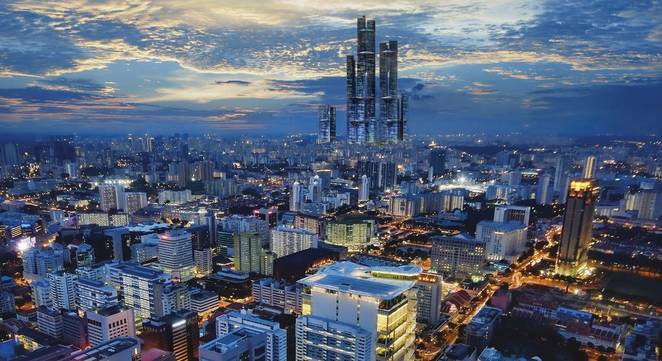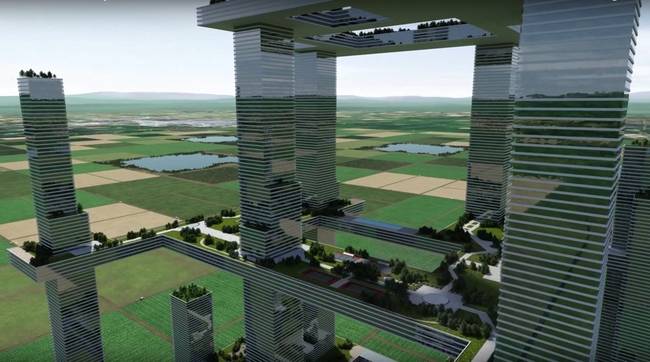Source: treehugger.com
Published: March 7, 2016

© Vertical City
Half a century ago the architect Paolo Soleri promoted the idea of an Arcology, “a highly integrated and compact three-dimensional urban form that is the opposite of urban sprawl with its inherently wasteful consumption of land, energy resources and time, and tendency to isolate people from each other and the community.”
Today there is a new vision that is a direct descendant: theVertical City. Eighteen months ago TreeHugger wrote about a Kickstarter to produce a book and a video that would describe a building form that “can save energy, support our growing population and preserve our horizontal spaces for food production, nature and recreation.” The book was released recently, and the video premiered in New York City this past Friday.
It is a controversial vision; some consider it unrealistic and techno-utopian. But the more one looks at it, the more sense it makes. It’s much more efficient to move people vertically, where there is perhaps ten feet between units, than it is horizontally, where you need serious infrastructure. Next to the bicycle, elevators are probably the most energy efficient way of moving there is. The reduced surface area per unit makes apartments the most energy efficient form of building. It preserves open space for agriculture and recreation, both needed for a growing population. The authors say that “If it is properly designed, a Vertical City provides its residents with a sense of belonging to a community and most importantly, it is easier and less costly to maintain and operate.”
Architects Ken King and Kellogg Wong and their associates present a vision of towers tied together by platforms that act as green space on top, sky lobbies, retail, restaurants and markets below. These are pretty big, but the concept means that the towers that hold it all up are slender and elegant. It’s not the only solution to this problem either; Kohn Pedersen Fox (KPF) recently showed their version that works much the same way.

Parks and green space visible on sky lobby floors/Screen capture
Elevators were a real limitation to building height; one car in a shaft in super tall buildings, (with very long heavy cables) is not very efficient. But now that elevators like ThyssenKrupp’s MULTI can run like vertical subways, the sky really is the limit. Elevator expert Rick Barker says “It’s not a trivial problem, but it’s…. relatively trivial.”
The video includes Dickson Despommier discussing vertical farming, but as Kenneth King notes, the buildings only cover 1-1/2 percent of the land with the balance available for horizontal farming. Others interviewed in the film, architects, engineers, planners, all describe the virtues of living in compact vertical communities where you never need a car, where there is no need for extensive road networks and expensive horizontal infrastructure, where fast trains zip you from vertical city to vertical city.
When Kohn Pedersen Fox proposed their mile high skyscraper recently, they called the exercise “practical dreaming.” But in fact all of the technology is in place to make this a practical reality. Given the multiple priorities we have to get people out of cars, to stop sprawl, and to find everyone a place to live and feed them all, the Vertical city looks more and more like a plausible option.
F. Scott Fitzgerald once noted that “The test of a first-rate intelligence is the ability to hold two opposed ideas in mind at the same time and still retain the ability to function.” And indeed, just the other day I was writing that perhaps the greenest building in the world is made of wood and thatch. Ken King and his Vertical City gang are proposing a very different future than the one we usually pitch, but this has to be seriously considered.
This article no longer exists at the Source link above. It can be found in the Matteroftrust.org Resource Library.
